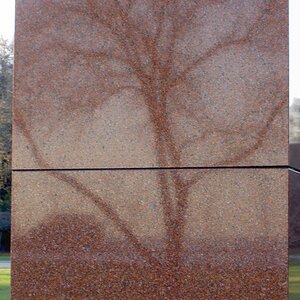VidThreeNorth
No longer a newbie, moving up!
- Joined
- Oct 21, 2016
- Messages
- 1,176
- Reaction score
- 214
- Can others edit my Photos
- Photos NOT OK to edit
As best as I can remember, I bought a used 300mm F4.0 Super Multi-Coat Takumar lens at a Flea Market before 2015 when the only Digital Interchangeable Lens Camera body that I had was a Panasonic Lumix GF3. Some people would call that a silly purchase since the GF3 was not a very capable camera. In fact, I had a vague idea that I might use it for pictures of the Pan-Am Games in Toronto. But in 2015, I was mainly concerned with video, and I never got around to using that setup.
These days, I mainly use my Sony a5000 E-Mount and three M4:3 bodies. But I have no current use for the 300mm lens. It has sat on the shelf for all these years. With my recent interest in the "Red Cat" 250mm F4.9 telescope, I thought I should finally take out the 300mm and give it a try. I am glad I did this because I learned a few things, mostly good, and, unfortunately, some bad.
A Quick History of Pentax 300mm F4 Lenses:
[Most Info From "Pentax Forums"]
Takumar 300mm F4 (1st) 1958 - 1961
- 3 elements in 3 groups
Takumar 300mm F4 (2nd) 1962 - 1965
- 4 elements in 4 groups
Super Takumar 300mm F4 1965 - 1971
- 5 elements in 5 groups
Ultra=Achromatic Takumar 300mm F5.6 1968 - ?
- 5 elements (some flourite) in 5 groups (corrected to infrared)
SMC Takumar 300mm F4 1971 - ?
- 5 elements in 5 groups, Open aperture metering
SMC Pentax 300mm F4 1975 - 1981
- 7 elements in 5 groups
[There are more but I'm stopping here.]
If you think about the availability of computers in the world, one wonders when computers started being used for designing lenses. It is surprising that Japan lagged behind other industrial countries in adopting computers. There was reliance on the abacus and the slide-ruler. But Asashi Pentax products were distributed in the US by Honeywell, which began a computer business around 1955. I do not know whether Asahi was influenced by Honeywell, so it would be interesting to find any historical notes of when Asahi Pentax started using computers in lens designs.
Looking at the 1965 Super Takumar lenses, without using a computer, the 5 element design would have been very difficult, so it is not a surprise that the basic optical design does not change again till the 1975 K-mount "Pentax" version. The fact that the lens was probably looked on as competitive would also be a factor. I have no comparitive information, but I do recall the SMC Takumar lenses being generally competitive with Canon, Minolta and Nikon through the 70's.
After the SMC Takumars, the SMC Pentax (K-mount) lenses, the 300mm F4's had substantial upgrades (there was a jump from the 5 elements in 5 group to 7 element). So as a general rule, if you find any of these on the used market, prefer to get the latest version you can, at least up to the first Auto-Focus versions. Unless you actually buy a Pentax camera body, there are no autofocus adaptors for other brands of cameras, so that technology is wasted. So why bother to pay for it?
The Tests:
First The Bad News:
The setup I had would not have worked. I have been using a M4:3 to Pentax K mount adapter, and I had a Pentax K-mount to screw thread adapter to mount the 300mm. Using this setup on my Olympus OM-D EM10, I found I could not focus to infinity. The farthest I can focus is about 100M. That would have been useless for covering Sailing. I have re-tested my M4:3 to K-mount adapter using my 50mm F2.0 M series Pentax lens (K-mount) and there is nothing wrong with that adapter. The 50mm focuses out to Infinity with no problems. My screw mount adapter is Pentax's own, and it would not have any problems that would account for this either. It seems to be the effect of combining the adapters that is causing the problem. I think that the solution is simply to buy specific screw mount adapters directly for the M4:3 mount and/or also another for my E-Mount.
This would have been inconvenient back then because I was busy, and is still "a problem" for me, but it is not impossible.
My test procedure was supposed to be a simple "compose - focus - shoot" using only F4.0 and F8.0. I can usually tell which pictures are which by looking at the EXIF data. When I found I could not focus to infinity, I left the focus and looked for compositions that were at the right distance. It worked well enough, but later I realized that I could have just focussed on objects a bit closer, which could have provided more variety.
Trying to find compositions at a set distance resulted in compositions where I do not recall exactly what was in focus. Also, thanks to the unusual lighting conditions (the snow) I am less positive about the aperture of some of the pictures. I also found that once, I checked the aperture and it was at 5.6 instead of 4.0, but at most there might have been one or two pictures that were not 4.0 or 8.0.
The Good News:
Aside from not being able to focus to infinity, I was able to test the lens, and it is very nice. I will look forward to the day when I can use it "completely".
The Result Details:
This version of the 300mm F4 had chromatic aberration from about 1/3rd out from center onward, occurring at F4. It reduces when stopped down and is almost gone below F8. It probably does not completely go away.
The lens is a bit soft wide open but again, sharpens up at F8 and probably peaks by about F11. It is generally considered a very good lens, particularly for its age. Later versions are, as mentioned above, a bit better. Note that the company also produced a 300mm F5.6 "Ultra-Achromatic-Takumar" during this period which was a superior and quite expensive lens featuring two Flourite elements.
"P3010003a-Crop01.jpg"
- a full resolution detail crop F4.0
"P3010012b-rsz1640-C1.jpg"
- probably F8.0
Date taken 2019-03-01 15:10:42
Size: 7,686,900 Bytes
Partial EXIF:
Dimensions 4608 x 3456
Bit depth 24
Resolution unit 2
Color representation sRGB
F-stop ?
Exposure time 1/2000 sec.
ISO speed ISO-200
Focal length 0
Metering mode Center Weighted Average
White balance Auto
- this image has been adjusted for brightness and colours but no sharpening has been added -- not that it really matters considering the size reduction.
"P3010012c-Crop01-C1.jpg"
Here is a full resolution detail crop from the original camera JPEG. There are a few "sparkles" which are reflections of the sun which is behind me. This is a good example of the real sharpness. The fine edge of the sparkles are "hard" contrast from light cyan to very dark. They cyan is caused by chromatic aberration, but the high boundary contrast requires a very high quality lens.
"P3010030a-rsz1640.jpg"
- probably F8.0
This picture is straight from the camera, but resized.
Date taken 2019-03-01 15:18:36
Size: 7,363,347 Bytes
Partial EXIF:
Dimensions 4608 x 3456
Bit depth 24
Resolution unit 2
Color representation sRGB
F-stop ?
Exposure time 1/1600 sec.
ISO speed ISO-200
Focal length 0
Metering mode Center Weighted Average
White balance Auto
"P3010030b-Crop01-C1.jpg"
The full resolution detail crop shows excellent resolution but there is still magenta-cyan chromatic aberration.
These days, I mainly use my Sony a5000 E-Mount and three M4:3 bodies. But I have no current use for the 300mm lens. It has sat on the shelf for all these years. With my recent interest in the "Red Cat" 250mm F4.9 telescope, I thought I should finally take out the 300mm and give it a try. I am glad I did this because I learned a few things, mostly good, and, unfortunately, some bad.
A Quick History of Pentax 300mm F4 Lenses:
[Most Info From "Pentax Forums"]
Takumar 300mm F4 (1st) 1958 - 1961
- 3 elements in 3 groups
Takumar 300mm F4 (2nd) 1962 - 1965
- 4 elements in 4 groups
Super Takumar 300mm F4 1965 - 1971
- 5 elements in 5 groups
Ultra=Achromatic Takumar 300mm F5.6 1968 - ?
- 5 elements (some flourite) in 5 groups (corrected to infrared)
SMC Takumar 300mm F4 1971 - ?
- 5 elements in 5 groups, Open aperture metering
SMC Pentax 300mm F4 1975 - 1981
- 7 elements in 5 groups
[There are more but I'm stopping here.]
If you think about the availability of computers in the world, one wonders when computers started being used for designing lenses. It is surprising that Japan lagged behind other industrial countries in adopting computers. There was reliance on the abacus and the slide-ruler. But Asashi Pentax products were distributed in the US by Honeywell, which began a computer business around 1955. I do not know whether Asahi was influenced by Honeywell, so it would be interesting to find any historical notes of when Asahi Pentax started using computers in lens designs.
Looking at the 1965 Super Takumar lenses, without using a computer, the 5 element design would have been very difficult, so it is not a surprise that the basic optical design does not change again till the 1975 K-mount "Pentax" version. The fact that the lens was probably looked on as competitive would also be a factor. I have no comparitive information, but I do recall the SMC Takumar lenses being generally competitive with Canon, Minolta and Nikon through the 70's.
After the SMC Takumars, the SMC Pentax (K-mount) lenses, the 300mm F4's had substantial upgrades (there was a jump from the 5 elements in 5 group to 7 element). So as a general rule, if you find any of these on the used market, prefer to get the latest version you can, at least up to the first Auto-Focus versions. Unless you actually buy a Pentax camera body, there are no autofocus adaptors for other brands of cameras, so that technology is wasted. So why bother to pay for it?
The Tests:
First The Bad News:
The setup I had would not have worked. I have been using a M4:3 to Pentax K mount adapter, and I had a Pentax K-mount to screw thread adapter to mount the 300mm. Using this setup on my Olympus OM-D EM10, I found I could not focus to infinity. The farthest I can focus is about 100M. That would have been useless for covering Sailing. I have re-tested my M4:3 to K-mount adapter using my 50mm F2.0 M series Pentax lens (K-mount) and there is nothing wrong with that adapter. The 50mm focuses out to Infinity with no problems. My screw mount adapter is Pentax's own, and it would not have any problems that would account for this either. It seems to be the effect of combining the adapters that is causing the problem. I think that the solution is simply to buy specific screw mount adapters directly for the M4:3 mount and/or also another for my E-Mount.
This would have been inconvenient back then because I was busy, and is still "a problem" for me, but it is not impossible.
My test procedure was supposed to be a simple "compose - focus - shoot" using only F4.0 and F8.0. I can usually tell which pictures are which by looking at the EXIF data. When I found I could not focus to infinity, I left the focus and looked for compositions that were at the right distance. It worked well enough, but later I realized that I could have just focussed on objects a bit closer, which could have provided more variety.
Trying to find compositions at a set distance resulted in compositions where I do not recall exactly what was in focus. Also, thanks to the unusual lighting conditions (the snow) I am less positive about the aperture of some of the pictures. I also found that once, I checked the aperture and it was at 5.6 instead of 4.0, but at most there might have been one or two pictures that were not 4.0 or 8.0.
The Good News:
Aside from not being able to focus to infinity, I was able to test the lens, and it is very nice. I will look forward to the day when I can use it "completely".
The Result Details:
This version of the 300mm F4 had chromatic aberration from about 1/3rd out from center onward, occurring at F4. It reduces when stopped down and is almost gone below F8. It probably does not completely go away.
The lens is a bit soft wide open but again, sharpens up at F8 and probably peaks by about F11. It is generally considered a very good lens, particularly for its age. Later versions are, as mentioned above, a bit better. Note that the company also produced a 300mm F5.6 "Ultra-Achromatic-Takumar" during this period which was a superior and quite expensive lens featuring two Flourite elements.
"P3010003a-Crop01.jpg"
- a full resolution detail crop F4.0
"P3010012b-rsz1640-C1.jpg"
- probably F8.0
Date taken 2019-03-01 15:10:42
Size: 7,686,900 Bytes
Partial EXIF:
Dimensions 4608 x 3456
Bit depth 24
Resolution unit 2
Color representation sRGB
F-stop ?
Exposure time 1/2000 sec.
ISO speed ISO-200
Focal length 0
Metering mode Center Weighted Average
White balance Auto
- this image has been adjusted for brightness and colours but no sharpening has been added -- not that it really matters considering the size reduction.
"P3010012c-Crop01-C1.jpg"
Here is a full resolution detail crop from the original camera JPEG. There are a few "sparkles" which are reflections of the sun which is behind me. This is a good example of the real sharpness. The fine edge of the sparkles are "hard" contrast from light cyan to very dark. They cyan is caused by chromatic aberration, but the high boundary contrast requires a very high quality lens.
"P3010030a-rsz1640.jpg"
- probably F8.0
This picture is straight from the camera, but resized.
Date taken 2019-03-01 15:18:36
Size: 7,363,347 Bytes
Partial EXIF:
Dimensions 4608 x 3456
Bit depth 24
Resolution unit 2
Color representation sRGB
F-stop ?
Exposure time 1/1600 sec.
ISO speed ISO-200
Focal length 0
Metering mode Center Weighted Average
White balance Auto
"P3010030b-Crop01-C1.jpg"
The full resolution detail crop shows excellent resolution but there is still magenta-cyan chromatic aberration.




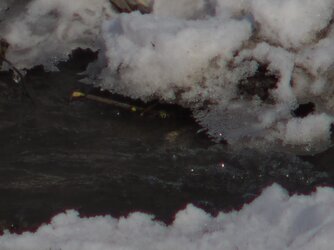


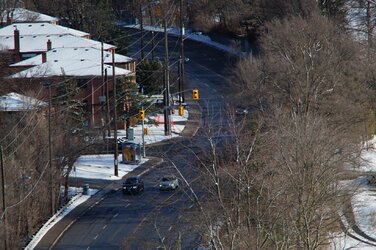
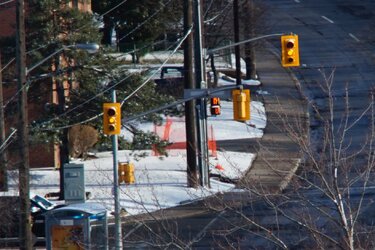

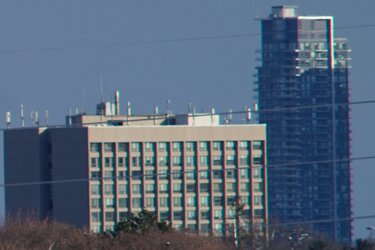




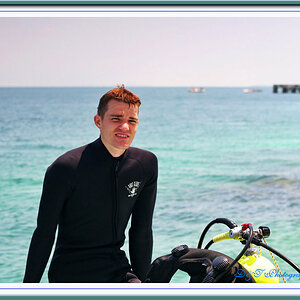

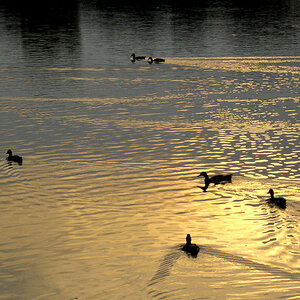


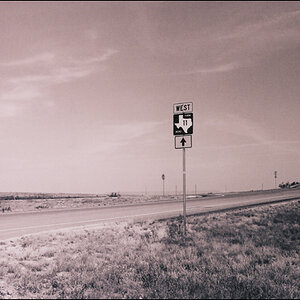
![[No title]](/data/xfmg/thumbnail/37/37522-f67b10bc5ee534f9bc21ee94917445b9.jpg?1619738129)
